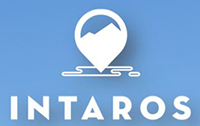This work is a result of INTAROS WP6 Task 6.5 on Arctic greenhouse gas exchange. The reported work rests upon results provided by WP3, more specifically tasks 3.1, 3.2 and 3.3. It synthesizes data stored in databases SOCAT and GLODAP and additional data from a Ferry box system crossing the Barents Sea opening and from Greenland fjords.
To show the potential establishing long term monitoring of the carbon system variables as suggested in INTAROS, trends in ocean uptake and transport of carbon, ocean acidification and deoxygenation can be produced. Examples on synthesis of carbon system data are shown, with the aim of analysing trends in ocean acidification in the Nordic Seas
The results reported by each of the marine science partners in Task 6.5 include:
UiB. The main task has been to prepare for a comparison of pCO2 field extracted from 2018 data in the SOCAT database, and test a self-organising map technique, a type of artificial neural network that uses machine learning. This was implemented to estimate surface water pCO2 values for the Barents Sea opening (10°E-30°E; 70°N-77.5°N).
NIVA. A FerryBox system was equipped on M/S Norbjørn which made approximately 25-30 round-trip crossings per year through the Barents Sea Opening between Tromsø, Norway and Longyearbyen, Svalbard. The FerryBox system included several physical, chemical, and biological sensors.
UA. In Greenland, measuring ocean CO2 and carbonate chemistry is included in the Greenland Ecosystem Monitoring (GEM) Programme. Although these long-term programs provide essential time-series of change, the three sites do not cover the spatial variation across the vast Greenland coastal zone.
